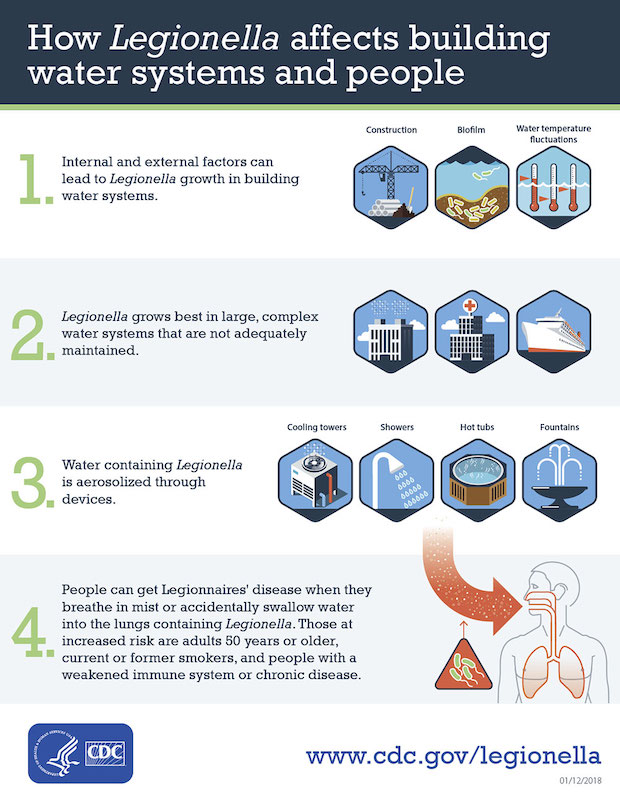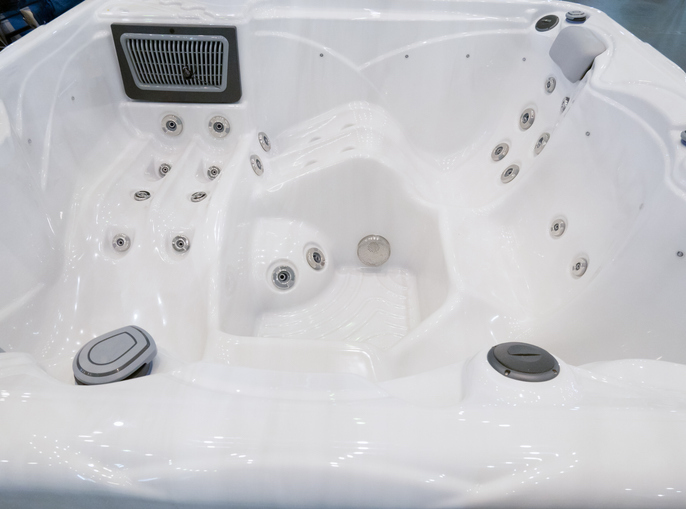Legionnaires’ disease is a severe form of pneumonia that results from breathing in contaminated water vapor. These infections almost always require hospitalization and are often fatal. Legionella, the bacteria that cause Legionnaires’ disease, grow best in the complex plumbing systems of large buildings, especially when the water has been stagnant. That’s why the Centers Disease Control and Prevention (CDC) is advising that before they reopen, commercial buildings take eight steps to mitigate the risk of Legionella that may be lurking in their plumbing systems. Here are the eight steps the CDC recommends.

1. Use CDC guidance to develop a comprehensive water management program (WMP).
a. Water Management Program Toolkit:
This toolkit is designed to help people understand which buildings and devices need a Legionella WMP.
b. Preventing Legionnaires’ Disease: A Training on Legionella Water Management Programs
c. Hotel Guidance: Considerations for Hotel Owners and Managers: How to Prevent Legionnaires’ Disease
d. Operating Public Hot Tubs for pool staff and owners
e. From Plumbing to Patients – WMP for healthcare facilities help to protect vulnerable patient populations as well as staff and visitors.
f. Preventing Occupational Exposure to Legionella
2. Make sure your water heater is properly maintained and the temperature is correctly set
a. Determine if the manufacturer recommends draining the water heater after a prolonged period of disuse and carry out all maintenance activities according to the manufacturer’s instructions or have the work performed by professionals.
b. Set your water heater to at least 120°F
c. If you set the temperature higher than 130˚F, take measures to prevent scalding.
3. Flush your water system
a. Flush hot and cold water through all points of use (e.g., showers, sink faucets) to replace all water inside building piping with fresh water.
b. The process may need to occur in segments (e.g., floors or individual rooms) due to facility size and water pressure.
c. Flush until the hot water reaches its maximum temperature
4. Clean all fountains and other decorative water features.
a. Be sure to follow any recommended manufacturer guidelines for cleaning
b. Be sure the cleaning process removes any visible sign of visible slime or biofilm.
c. After the water feature has been re-filled, measure disinfectant levels to make sure they are at proper levels.
5. Ensure hot tubs/spas are safe for use
a. Check for existing guidelines from your local or state regulatory agency before use.
b. Perform a hot tub/spa disinfection procedure before use.
c. Make sure that the hot tubs/spas are free of visible slime or biofilm before re-filling them with water.
d. If testing for Legionella, all decisions should be made in consultation with facility water management program staff along with relevant public health authorities.
6. Ensure cooling towers are clean and well-maintained
a. Follow the manufacturer’s guidelines and industry best practices.
b. Be sure the tower and basin are free of visible slime or biofilm.
7. Clean your safety equipment
a. This includes fire sprinkler systems, eye wash stations, and safety showers.
b. Regularly flush, clean, and disinfect these systems according to manufacturers’ specifications.
8. Maintain your water system
a. Consider contacting your local water utility to learn about any recent disruptions in the water supply.
b. After your water system has returned to normal, reduce the risk of Legionella growth by regularly checking temperature, pH, and disinfectant levels.
c. Follow your WMP, document activities, and promptly intervene when problems arise.
